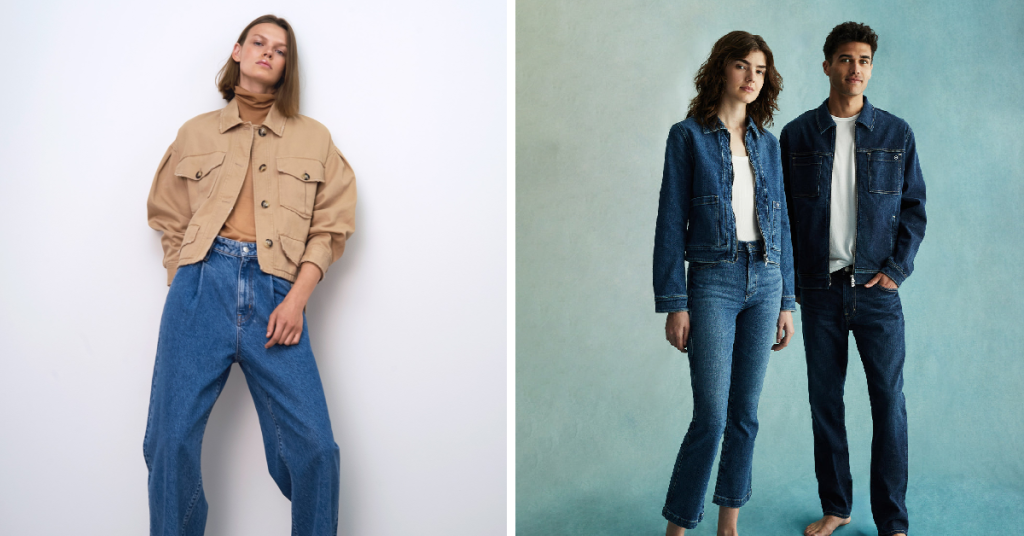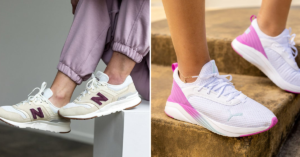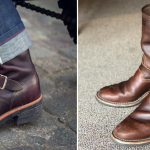When we talk about sustainable fashion, one item that often comes to mind is jeans. We all have a favorite pair of jeans that we love to wear day in and day out. But have you ever stopped to think about the environmental impact of the denim industry? Traditional denim production can be a major source of pollution and waste, but there is a growing trend towards more eco-friendly options like biodegradable jeans.

One of the key questions is, what makes jeans biodegradable? It all comes down to the materials used in the production process. By incorporating natural fibers and biodegradable components, these jeans are designed to break down over time, leaving behind minimal environmental harm. As consumers become more conscious of their choices, the demand for sustainable denim options continues to rise, leading to a shift in the fashion industry towards more environmentally-friendly practices.
What Makes Jeans Biodegradable?
When it comes to making jeans biodegradable, it’s all about the materials used in the production process. Traditional denim is typically made from non-biodegradable materials like cotton, polyester, and other synthetic fibers that take hundreds of years to break down in landfills. On the other hand, biodegradable jeans are crafted from organic and natural fibers such as organic cotton, hemp, and Tencel, which can easily decompose when disposed of properly. These eco-friendly materials not only reduce the environmental impact of denim production but also offer a sustainable solution for a more circular fashion economy.
In addition to the choice of materials, the manufacturing process plays a crucial role in making jeans biodegradable. Many sustainable denim brands use innovative techniques like natural dyeing processes and low-impact finishing methods to minimize the use of harmful chemicals and reduce water consumption. By prioritizing eco-friendly practices throughout the entire production chain, biodegradable jeans are not only better for the planet but also promote ethical and sustainable fashion choices for consumers.
The Environmental Impact of Traditional Denim vs Biodegradable Jeans
Traditional denim production involves the use of synthetic dyes, chemicals, and massive amounts of water, contributing to pollution and water scarcity. Additionally, the processing of traditional denim often leads to the release of toxic substances into the environment, posing risks to both ecosystems and human health.
On the other hand, biodegradable jeans are typically made from sustainable materials like organic cotton, hemp, or Tencel, which require less water and fewer harmful chemicals during the production process. As these biodegradable materials break down naturally at the end of their lifecycle, they have a reduced impact on the environment compared to traditional denim, offering a more sustainable alternative for conscious consumers.
Key Materials Used in Biodegradable Jeans
Now, when we talk about the key materials used in biodegradable jeans, one standout player is organic cotton. This type of cotton is grown without the use of synthetic pesticides or fertilizers, making it a more eco-friendly choice compared to conventional cotton. Organic cotton helps reduce the environmental impact of denim production by promoting soil health and biodiversity in the farming process.
Another essential material in making biodegradable jeans is Tencel, a fiber derived from sustainably sourced wood pulp. Tencel is known for its softness, breathability, and biodegradability, making it a popular choice for eco-conscious denim brands. By using Tencel in denim production, brands can reduce their reliance on non-renewable resources and decrease their carbon footprint.
Biodegradable Jeans Making Process
In the world of sustainable fashion, biodegradable jeans are slowly but surely making their mark. Brands are experimenting with innovative materials like organic cotton, TENCEL™, and hemp to create denim that breaks down naturally at the end of its life cycle. These eco-friendly alternatives to traditional jeans are gaining popularity among consumers who are looking for stylish yet environmentally conscious clothing options.
The making process of biodegradable jeans involves incorporating cutting-edge techniques such as ozone washing and laser finishing to reduce water consumption and chemical usage. By embracing these sustainable practices, denim manufacturers are not only minimizing their environmental footprint but also setting a new standard for the fashion industry. This shift towards biodegradable denim signifies a positive step towards a more circular economy where materials are reused and recycled, paving the way for a greener and cleaner future.
Benefits of Biodegradable Jeans for the Environment
Imagine a world where your jeans could actually benefit the environment rather than harm it. Well, that’s where biodegradable jeans come into play! These innovative denim pieces are designed to break down naturally, reducing the pollution and waste that traditional jeans can create.
By choosing biodegradable jeans, you’re not only reducing the amount of waste that ends up in landfills but also decreasing the carbon footprint associated with denim production. This means less harm to the environment in terms of both pollution and resource consumption. Plus, as biodegradable jeans decompose, they release valuable nutrients back into the soil, contributing to a healthier ecosystem. So, not only are you looking stylish in your denim, but you’re also making a positive impact on the planet—talk about a win-win situation!
Challenges and Limitations of Biodegradable Denim
Biodegradable denim sounds like a dream come true for eco-conscious fashionistas, but let’s not overlook the challenges and limitations that come with this innovative material. One major hurdle is the availability and scalability of biodegradable materials. While some brands are taking the lead in incorporating sustainable fibers like organic cotton and Tencel into their jeans, the production of these materials on a large scale can be costly and not yet fully optimized for widespread use in the denim industry.
Another point to consider is the durability and performance of biodegradable denim compared to traditional denim. Since biodegradable materials are designed to break down naturally over time, there may be concerns about the longevity and wear resistance of biodegradable jeans. Consumers who are used to the robustness of conventional denim may need some convincing that biodegradable options can withstand the test of time and daily wear and tear without compromising on quality and style.
Brands Pioneering Biodegradable Jeans
Denim lovers and eco-conscious consumers alike will be pleased to know that several forward-thinking brands have been at the forefront of pioneering biodegradable jeans. These brands, such as Mud Jeans, Reformation, and Boyish Jeans, are leading the way in sustainable fashion by incorporating innovative materials that break down naturally once disposed of.
Mud Jeans, for instance, utilizes a blend of organic cotton and Tencel in their biodegradable jeans, ensuring that the garments not only look stylish but also have a minimal impact on the environment. Similarly, Reformation focuses on creating biodegradable denim by using materials like Tencel and Refibra, a revolutionary fabric made from wood pulp. Boyish Jeans takes a unique approach by incorporating a mix of organic cotton and hemp in their biodegradable designs, offering consumers chic and sustainable options for their denim wardrobe.
Consumer Tips for Choosing Biodegradable Denim
When looking to purchase biodegradable denim, one key tip is to check the label or product description for materials such as organic cotton, Tencel, or hemp. These natural fibers are more environmentally friendly and biodegradable compared to synthetic materials like polyester. Additionally, look for jeans that are dyed using eco-friendly methods, such as plant-based or low-impact dyes, to further reduce the environmental impact.
Another helpful tip for choosing biodegradable denim is to consider the manufacturing process of the jeans. Opt for brands that prioritize sustainable practices like water conservation, energy efficiency, and ethical labor standards. Brands that are transparent about their production methods and environmental initiatives are more likely to offer truly biodegradable and eco-conscious denim options. By supporting these brands, you can feel good about not only the environmental impact of your jeans but also the ethical considerations behind their production.
The Role of Biodegradable Jeans in the Circular Fashion Economy
Biodegradable jeans play a crucial role in the circular fashion economy by offering a sustainable alternative to traditional denim. These eco-friendly jeans are designed to decompose naturally, reducing the environmental impact of clothing waste. With the fashion industry being a major contributor to pollution, the shift towards biodegradable jeans is a positive step towards a more sustainable future.
In a circular fashion economy, the focus is on designing products that can be easily recycled or composted at the end of their life cycle. Biodegradable jeans fit perfectly into this concept by providing a solution that minimizes waste and promotes a more eco-conscious approach to fashion. By choosing biodegradable denim, consumers can actively contribute to reducing the industry’s carbon footprint and fostering a more environmentally friendly mindset in the world of fashion.
FAQs about Biodegradable Jeans
What makes jeans biodegradable?
Biodegradable jeans are made using materials that can naturally break down over time, such as organic cotton, Tencel, or hemp.
How do traditional denim jeans impact the environment compared to biodegradable jeans?
Traditional denim jeans are often made using non-renewable resources and harsh chemicals, contributing to pollution and waste. Biodegradable jeans, on the other hand, are made from sustainable materials and break down more easily at the end of their lifecycle.
What are some key materials used in biodegradable jeans?
Some key materials used in biodegradable jeans include organic cotton, Tencel (made from eucalyptus trees), and hemp.
What are the benefits of biodegradable jeans for the environment?
Biodegradable jeans help reduce waste in landfills, minimize the use of harmful chemicals in production, and promote sustainability in the fashion industry.
Are there any challenges or limitations to using biodegradable denim?
Some challenges include the higher cost of production and limited availability of biodegradable materials. Additionally, the process of biodegradation may vary depending on the conditions in which the jeans are disposed.
Can you name some brands that are pioneering biodegradable jeans?
Some brands leading the way in producing biodegradable jeans include Reformation, Nudie Jeans, and Mud Jeans.
What are some consumer tips for choosing biodegradable denim?
Look for jeans made from organic cotton, Tencel, or hemp, and check for certifications such as GOTS (Global Organic Textile Standard) or OEKO-TEX to ensure sustainable production practices.
How do biodegradable jeans contribute to the circular fashion economy?
Biodegradable jeans help close the loop in the fashion industry by reducing waste, promoting sustainable practices, and encouraging a more environmentally-friendly approach to clothing production and disposal.
Conclusion
The rise of biodegradable jeans reflects a growing awareness of the environmental impact of the fashion industry. Traditional denim production is resource-intensive and contributes to pollution, but biodegradable options offer a more sustainable alternative. These eco-friendly jeans are made from materials like organic cotton, Tencel, and hemp, which break down naturally over time, reducing their long-term impact on the environment.
As more brands embrace biodegradable denim, consumers are presented with stylish options that align with their values. While challenges like cost and scalability remain, the benefits of reducing waste and promoting a circular fashion economy make biodegradable jeans a promising step towards a more sustainable future. By choosing these innovative products, consumers can actively support eco-conscious practices and contribute to the shift towards a greener fashion industry.






